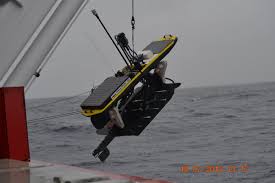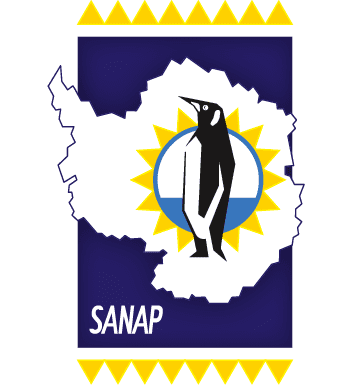Predictive computational models of Antarctic sea ice through metocean thermodynamics are used to determine sea ice extent and break up. These models are also used for input into climate models and for analysis of the effects upon ships and offshore structures (Feltham, 2008).


(Above: left picture: Miss R. Audh, Mr B. Hall and Mr Omatuku Ngongo. Right picture: Dr T. Rampai)
However, these models need to be able to account not just for the thermodynamic fluxes occurring within the sea ice and ocean, but also the dynamic effects on the ice and its resultant fracture mechanics (Rampal et al., 2011). At present, there is a lack of data for the mechanical properties of sea ice within the Marginal Ice Zone (MIZ), which means it is not possible to calibrate and verify computational models. Sea ice physical and mechanical properties vary greatly due to the meteorological and oceanic conditions experienced, as well as with time (Cox et al., 1984; Petrich and Eicken, 2010).
 (Above left to right: temperature-depth profiles with time data of artificially grown sea ice, crystal structure of artificially grown sea ice, comparison of the Elastic Modulus of different types of sea ice)
(Above left to right: temperature-depth profiles with time data of artificially grown sea ice, crystal structure of artificially grown sea ice, comparison of the Elastic Modulus of different types of sea ice)
The physical properties such as grain structure, temperature, salinity and brine volume results all affect the measured mechanical properties such as compressive strength, failure envelope, Elastic Modulus and Poisson’s ratio.
 (Above: left picture (UCT MARiS Mobile polar lab), Middle picture (Miss B. Matlakala and Mr F. Guni doing artificial sea ice experiments), Right Picture (Compression machine for testing mechanical properties of sea ice).
(Above: left picture (UCT MARiS Mobile polar lab), Middle picture (Miss B. Matlakala and Mr F. Guni doing artificial sea ice experiments), Right Picture (Compression machine for testing mechanical properties of sea ice).
The unique contribution from a materials engineering approach is: 1. performing lab-based experiments to calibrate/test the designed equipment’s’ suitability for the intended research. 2. the equipment are used to investigate sea ice dynamics in a controlled and isolated approach (understand the influences of different variables on sea ice properties). This will be done with the designed inhouse to make artificial sea ice. 4. use designed equipment to test the relevant sea ice properties in situ.
 (Above left to right: Dr Tokoloho Rampai and A/Prof Marcello Vichi) Dr Tokoloho Rampai (chemical engineering department) is the principal investigator on the project, with the co-investigator A/Prof Marcello Vichi from the department of Oceanography.
(Above left to right: Dr Tokoloho Rampai and A/Prof Marcello Vichi) Dr Tokoloho Rampai (chemical engineering department) is the principal investigator on the project, with the co-investigator A/Prof Marcello Vichi from the department of Oceanography.

 The project is facilitated through the MARiS interdisciplinary centre and hosted by the Chemical Engineering Department at the University of Cape Town. MARiS (Marine and Antarctic Research for Innovation and Sustainability) is the new interdisciplinary center for Marine and Antarctic Science projects, involving multiple departments within the University of Cape. The centre is an aggregator of competence and expertise that considers academic and technological knowledge in relation to societal benefits, with the overarching aim of enhancing the production of knowledge and human capacity in marine and Antarctic research. The center strives to develop technological and innovative solutions to interdisciplinary marine problems and for extreme conditions like the polar environment. Furthermore, to promote and maintain post-graduate training, including interdisciplinary curricula. For more information about the center, please click here, or visit maris.uct.ac.za.
The project is facilitated through the MARiS interdisciplinary centre and hosted by the Chemical Engineering Department at the University of Cape Town. MARiS (Marine and Antarctic Research for Innovation and Sustainability) is the new interdisciplinary center for Marine and Antarctic Science projects, involving multiple departments within the University of Cape. The centre is an aggregator of competence and expertise that considers academic and technological knowledge in relation to societal benefits, with the overarching aim of enhancing the production of knowledge and human capacity in marine and Antarctic research. The center strives to develop technological and innovative solutions to interdisciplinary marine problems and for extreme conditions like the polar environment. Furthermore, to promote and maintain post-graduate training, including interdisciplinary curricula. For more information about the center, please click here, or visit maris.uct.ac.za.
Text and Images: Tokoloho Rampai






